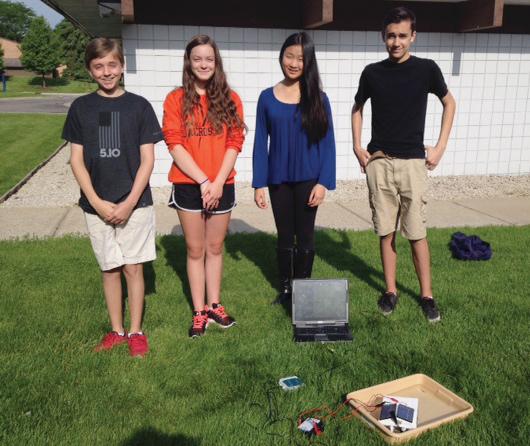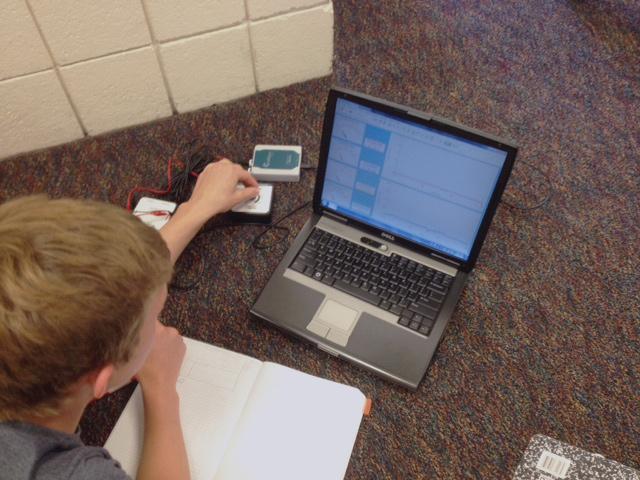2014 Vernier/NSTA Technology Award winner, Christine Gleason, a teacher at Greenhills School in Ann Arbor, Michigan, expanded her end-of-year unit to continue teaching and applying energy concepts beyond the classroom walls. Gleason’s lesson evolved from a conventional non-renewable energy sources focus to an emphasis on weighing the advantages and disadvantages of alternative, renewable options, as environmental sustainability awareness increases.
During the unit, Gleason’s 8th grade students compared the use of various renewable and non-renewable resources for generating electricity. Students worked in groups researching energy sources, presented their findings to the class, constructed tabletop wind turbines, and they learned how to take energy measurements using data-collection technology. The students tested the energy output of other appliances and then began the actual construction of their own alternative energy system. Their system needed to power a vehicle, machine, or other structure. Students then used the Vernier Energy Sensor to measure the electrical power output of their system.

“Vernier has provided students with a hands-on way to collect data, and, in this specific unit, learn how current and voltage are related as part of Ohm’s law,” said Gleason. “Using these data, they are able to learn about the advantages and disadvantages of different power sources, improve their designs, and apply the engineering design process.”

Complementing the award-winning unit—and connecting the concepts learned during the unit to a real-world application—students have the opportunity to measure the energy produced by their school’s rooftop wind turbine, which was purchased in 2006 and also incorporates sensors and supporting Vernier software and hardware. In addition to the Energy Sensor, Gleason and her students use temperature probes, the Soil Moisture Sensor, the Current Probe, LabQuest 2 and LabQuest Mini devices, Watts Up Pro, and KidWind wind turbine kits to identify temperature, wind condition, and weather trends. They also learn how renewable energy helps meet the school’s needs.
“The technology received from the Vernier/NSTA Technology Award has greatly impacted what we can do—and what we plan to do—in the classroom,” continued Gleason. “It has allowed students to explore STEM concepts as part of real-world applications and really helped to make the learning experience more meaningful for them.”
